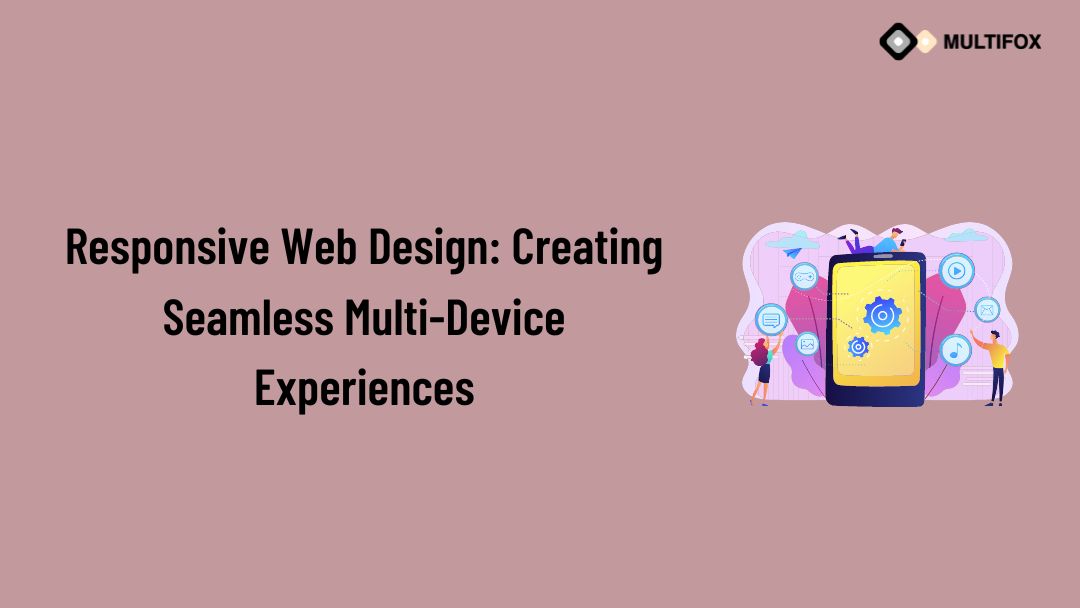WordPress Themes Starting a new business is exciting, especially in today’s digital world. When someone comes up with a startup idea, it’s more than...
Responsive Web Design: Creating Seamless Multi-Device Experiences
Table of Contents
Introduction
In the world of digital engagement, where users access information across a multitude of devices, responsive web design has emerged as a pivotal strategy.
Imagine a website that alters its layout, images, and overall look to fit the screen of any device perfectly, be it a smartphone, tablet, or desktop.
It’s not just about looks; it’s about providing an efficient, enjoyable browsing experience.
Let’s explore this concept more.
1. The Evolution of Web Design
A Brief History of Traditional Web Design
Traditional web design once focused solely on creating websites for standard desktop monitors.
As the best white label agency of the past would know, there was no need to consider other devices.
But with the technology’s evolution, this limited approach no longer suffices.
The Shift Towards Mobile Devices
The proliferation of mobile devices ushered in a new era. People wanted access to websites from their phones and tablets.
This needs compelled designers to think beyond the desktop, considering the varying screen sizes and orientations.
Introduction to Responsive Design
Responsive design is the answer to this shift. By utilizing fluid grids, flexible images, and media queries, websites now adapt and provide a consistent experience across all devices.
This approach mirrors the strategy used in successful email campaigns that seek to engage users effectively.
2. Understanding the Principles of Responsive Design
Fluid Grids
Fluid grids are a cornerstone of responsive design.
They allow the website’s layout to resize itself, fitting any screen size. Just like water takes the shape of its container, a fluid grid ensures that the website appears natural and appealing on any device.
Fluid grids are an essential aspect of responsive design, enabling a smooth transition across various screen sizes.
By utilizing relative units like percentages rather than fixed pixels, fluid grids ensure that the layout’s proportions are maintained, regardless of the device’s size.
This intelligent approach to design not only enhances the aesthetics but also contributes to an optimized user experience.
A well-implemented fluid grid system can elegantly restructure content, aligning with the device’s specific screen size, and thereby providing a unified and coherent visual presentation.
It’s an intricate balance that underlines the very essence of responsive design.
Flexible Images
Images play a vital role in web design, and they need to adapt too. Flexible images resize themselves based on the screen’s size, maintaining their clarity and positioning.
This adaptability ensures that the visual message remains solid and consistent.
Media Queries
Media queries add another layer of customization.
They detect the device’s properties and adjust the content accordingly.
This personal touch ensures that the website feels tailored for each user, similar to how targeted email campaigns increase click-through rates.
Media queries are essential tools within responsive web design that enable designers to apply different styles based on the user’s device characteristics.
They can detect various features such as screen width, height, resolution, and even orientation.
By employing media queries, designers can create a truly customized experience that adapts to individual user preferences.
This ensures a cohesive and engaging user interface, providing clarity and accessibility across a multitude of devices.
The precision and adaptability that media queries offer underscore their importance in creating a truly responsive and user-friendly web design.
3. Building a Responsive Website from Scratch
Planning the Design
Building a responsive website begins with strategic planning.
Identifying the target audience, understanding the devices they use, and defining the content’s hierarchy ensures that the final design will serve its purpose effectively.
The planning stage is akin to plotting a journey, considering every twist and turn that users might encounter.
Factors such as user demographics, content importance, navigation flow, and aesthetic appeal must be carefully weighed.
It’s a complex but rewarding process that lays the foundation for a responsive site, much like meticulous planning in email campaigns ensures targeted reach and increased engagement.
By prioritizing user needs and crafting a design roadmap, developers set the stage for a seamless multi-device experience.
Coding Strategies
Coding is the heart of responsive design. Using HTML for the structure, CSS for the style, and JavaScript for interactivity, designers can create websites that not only look good but also perform well across all devices.
Attention to detail, collaboration between design and development teams, and adherence to best practices are crucial.
Emphasizing clean code, modular design, and maintaining consistency across different sections can significantly enhance the effectiveness of a responsive site.
These principles drive the creation of a cohesive and dynamic multi-device experience, ensuring that the user enjoys a seamless navigation process regardless of the device being used.
Testing on Various Devices
Testing is essential. Just as a marketer would test different email campaigns, a web designer must test the responsive design on various devices.
It ensures consistency and helps in refining the final product.
Testing a responsive design on various devices is paramount to its success. It’s not enough to assume that a layout will translate seamlessly from one screen to another.
Designers must actively test the website on different devices, including various smartphones, tablets, and desktop configurations.
This rigorous testing ensures that every element aligns perfectly, images resize appropriately, and navigation remains intuitive across all platforms.
It’s a meticulous process that requires attention to detail and a thorough understanding of how users interact with different technologies.
The goal is to create a unified and professional experience, regardless of the device being used.
4. Challenges and Solutions in Responsive Design
Common Problems Faced
Responsive design is not without its challenges. Issues like slow loading times, inconsistent layouts across devices, and overlapping elements can arise.
These issues can diminish the user’s experience, much like poorly planned email campaigns can reduce engagement.
Innovative Solutions
But solutions exist. Using optimized images, implementing proper coding practices, and continuous testing can turn these challenges into opportunities.
By staying informed and creative, designers can overcome these hurdles, creating sites that genuinely resonate with users.
In the pursuit of overcoming challenges in responsive web design, designers must adopt a proactive mindset.
By leveraging advanced tools and frameworks, staying abreast of emerging technologies, and maintaining an unwavering commitment to continuous improvement, innovative solutions can be crafted.
Collaboration with developers, regular updates, and a keen eye for detail can further enhance a website’s responsiveness.
The key is not merely to find solutions but to innovate, adapt, and excel.
Such a determined and strategic approach ensures that the website performs efficiently, meeting the users’ needs and expectations across various devices.
Conclusion
Responsive web design is more than a trend; it’s a necessity in today’s multi-device world.
It parallels the precision and engagement found in the best email campaigns, providing a seamless experience that meets users’ ever-changing needs.
By understanding its principles, embracing its techniques, and overcoming its challenges, designers can create websites that not only look beautiful but also perform exceptionally.
It’s about connecting with users wherever they are and however, they choose to engage.
The future is responsive, and the opportunity to excel in this arena awaits.
AlsoRead:


